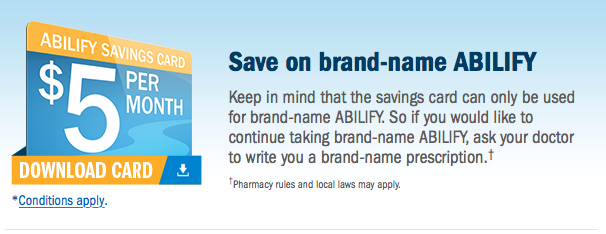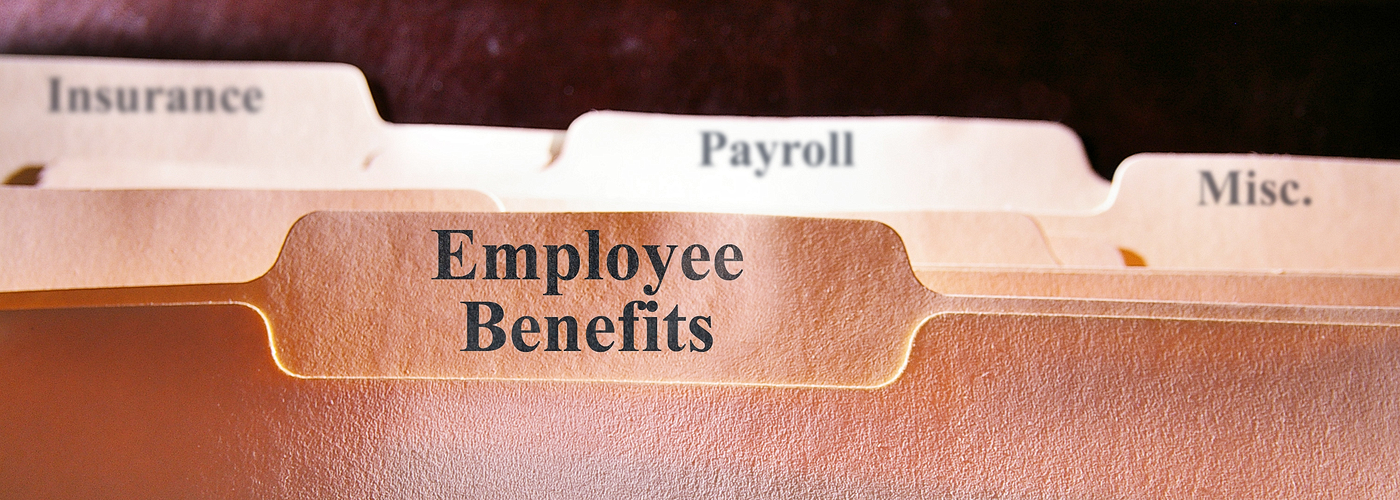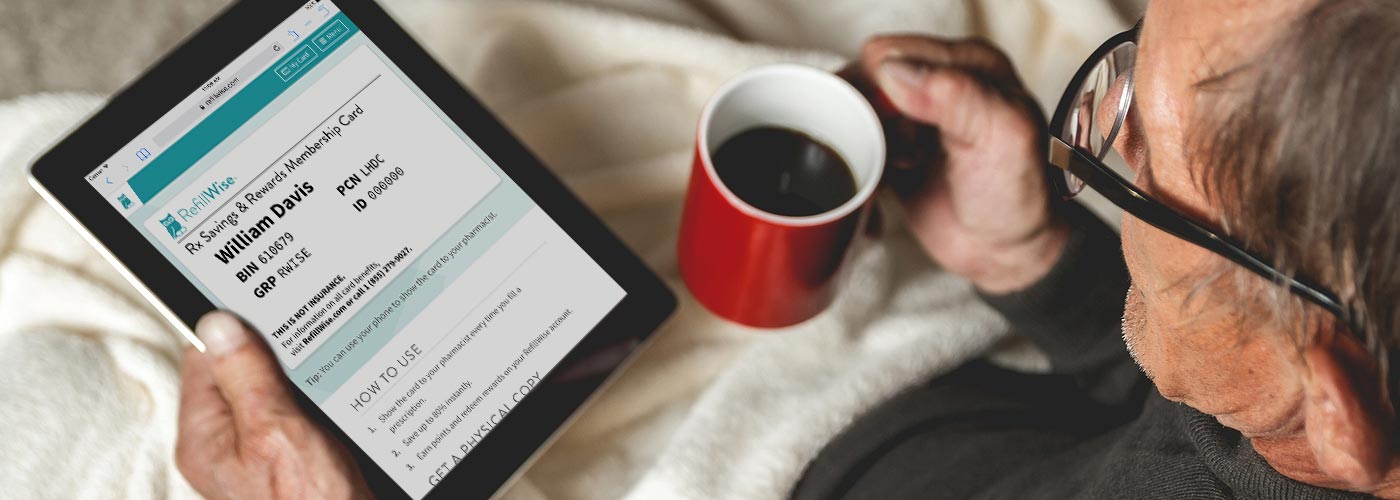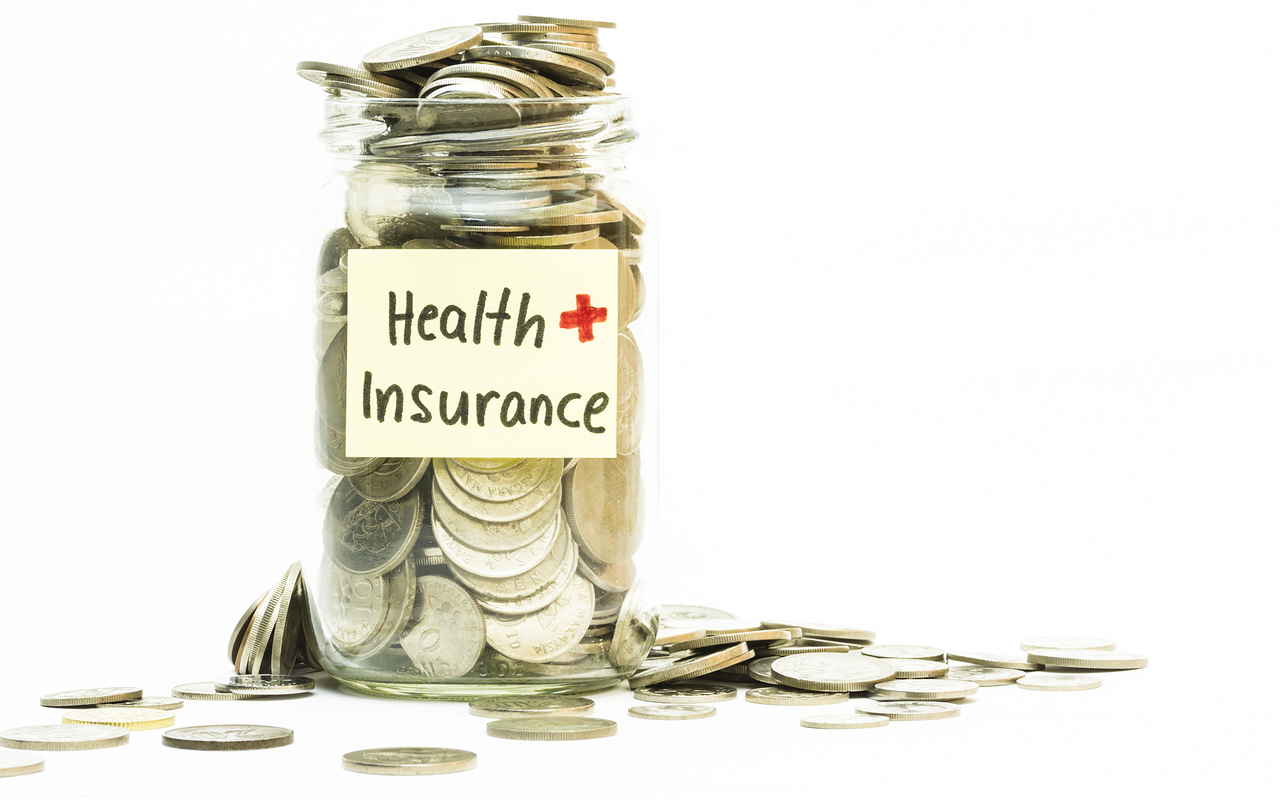
Meet Katie*
Katie is a 31 year old single woman with a graduate degree. She works at a private school in Texas teaching children with profound special needs. Like many employees of small private schools, she doesn’t get health insurance through her employer. Katie is one of the millions of Americans who is underinsured even though she works full-time.
Katie’s Health History
Katie is a healthy adult who rarely gets sick. But she has anxiety, depression and obsessive compulsive disorder and has been on medications controlling her symptoms for years. She took a daily antidepressant and had Klonopin available for emergencies.
Katie’s Health Insurance Story
Until taking her current job, Katie had health insurance through her previous employer. Their plan was excellent and she only paid about $10 a month for her main prescription. But while the health insurance was great, the salary was low and the work environment was not good.
Katie found a much better position at a new school. The salary was higher, but the new school opted to not cover employees, instead sending them to the individual state health insurance exchanges. They assumed their employees should be able to get a better deal on the exchange. But when Katie applied to the exchange, she was told that she was not eligible for any discounts. Instead, she decided to go through an insurance broker who was able to get her the same plan she’d been on at her previous job at the same price as the plans she could get on the exchange, $260 a month. But after a year the plan was discontinued and she had to start again.
Meanwhile, the prescription she took was moving to generic. What had been a $10 prescription with rebates became a $50-60 medication as the manufacturer stopped honoring rebates. She switched to the generic when it came out and it went back down to $10 a month.
After her plan was discontinued, the insurance broker found her a plan that was the same price per month, but it was a High Deductible Plan. With this plan she had to pay out of pocket for everything up to $6000. High deductible plans can be a good option for people like Katie who are young and healthy, but they don’t cover prescriptions so she would have to pay out of pocket for those as well.
The total for her regular prescription without insurance was now over $370 a month. She couldn’t afford this so she made the difficult decision to go off the medication. Right before switching plans her doctor wrote her a 90 day prescription for weaning off the medication and she filled it. As she came off the medication her anxiety and depression worsened significantly. Because she had to go off her medication anyways, she recently switched plans again to a faith-based insurance that is less expensive and has a lower deductible, but doesn’t cover any mental health.
Life without these necessary medications is difficult and Katie doesn’t think going without her medications will work long-term. She is looking at her budget trying to find ways to cut expenses so she can afford to pay for what she needs, but as a private school teacher, her salary is limited and her budget is tight.
What can Katie do?
RefillWise can help Katie afford the prescriptions she needs. Since she can’t use her prescription insurance to cover the meds that keep her healthy, she can take RefillWise to the pharmacist and use it to receive a discount on her prescriptions.
Katie’s story may sound familiar. Many well-educated, Americans who work full-time are underinsured and unable to afford their monthly prescriptions. RefillWise fills in the gap between what your insurance covers and what your budget can afford.
*Her name has been changed to protect her privacy.

The astronomical prices of many medications has become a hot topic, especially with the recent development of the now-infamous EpiPen controversy. At first glance, it’s difficult to understand not only how these drugmakers can get away with charging such high prices, but how anyone can even afford to buy these expensive medications in the first place. Although the vast majority of Americans can’t afford to pay $300 or $400 (or more) a month for their medicine, a closer look reveals that these huge price tags are often inflated by drugmakers as a bargaining tactic in the escalating war between drugmakers, insurance companies, and PBMs. As that war continues to heat up, drugmakers have harnessed a remarkably effective weapon to keep their high-priced drugs accessible to anyone who has a private insurance plan: manufacturer coupons. While these coupons enable anyone with a private insurance plan to be able to afford expensive brand meds, they may be causing serious harm both in the short term and to the future of healthcare.
The Real War on Drugs
By the year 2000, nearly every major health insurance company had given up trying to fight the drugmakers and turned over their prescription management to companies called PBMs (Pharmacy Benefit Managers). PBMs act as a negotiator for an insurance company and its customers, bargaining with pharmacies and with drugmakers to get those customers discounted prices on drugs. Representing millions of customers across dozens of insurers gave PBMs considerable bargaining power against drugmakers. As a response, in the last decade drugmakers began aggressively setting higher prices for their latest and greatest blockbuster medications to try and take back some of the profits that they had begun to lose. PBMs reacted by increasing the prices that their customers pay for brand drugs as an economic incentive for customers to choose generic medication over branded. They strategized that if their customers had to share a big chunk of the cost for branded medications, they would choose less expensive generics which would save both the customers and insurers money.
Unfortunately, drugmakers responded by unleashing coupons that covered nearly all of the customer’s portion of the pharmacy bill for an expensive drug—as long as the patient had a private insurance plan.
As an example, let's say you have insurance through your company and you want to fill a prescription for Abilify without a manufacturer’s coupon. Even with a good private insurance plan, your share of the bill before you hit your deductible would be $800, and your insurance company would likely be paying at least another $800. It doesn’t take an expert to realize that very few people can afford to pay $800 a month. Without a coupon, most people would either switch to a generic or ask their doctor for an alternate medication. Score one for the PBM.
ENTER THE COUPON

Now let's say you want to fill the same prescription, but this time, you have a manufacturer’s coupon. All of a sudden your price plunges from $800 down to $5, meaning you are almost certainly going to choose the brand drug over a generic alternative. What you may not know, however, is that your PBM and insurance plan are still on the hook for their side of that $800 price tag. Score one for the drugmakers.
This manufacturer’s coupon phenomenon has gone from a trend to the new norm. Some of the most common (and profitable) drugs in America are listed below, along with their coupon price. The cash price is what someone who has no insurance would be charged, while the coupon price is what someone with a private insurance plan would pay when using a manufacturer’s coupon. If and when a Medicare patient enters the coverage gap, they would likely end up paying just under 50% of the cash price.
| Medication | Cash Price | Price w/ Manufacturer's Coupon |
|---|---|---|
| Abilify | $900 | $5 |
| Crestor | $270 | $3 |
| Lantus | $400 | $25 |
| Xarelto | $440 | $0 |
| Nexium | $280 | $15 |
| Eliquis | $420 | $10 |
| Januvia | $440 | $5 |
| Epipen | $650 | $350 |
While many people already weary from rising healthcare costs won’t lose any sleep over their PBM and insurance plan having to foot the entire bill for an expensive medication, there are some real negative consequences. One issue is that the manufacturer's coupon oftentimes doesn't work more than once, and is only intended to get a patient "on drug" as a manufacturer would say. Even for coupons that work more than once, although customers save money in the short term, using the coupon essentially guarantees that PBMs and insurance companies will increase insurance premiums for everyone, even those who don’t take expensive medications. The most disconcerting issue, however, and the reason why we hear of so many people being faced with laughably high prices for medications, is that Manufacturer Coupons can't be used by anyone on Medicare or by anyone who is uninsured. There are 33 million Americans who still lack health insurance and another 40 million who have prescription insurance through Medicare. That means that over 70 million of the most vulnerable Americans—many of whom are more likely to either face illness, poverty, or both—must deal with the harsh reality that they simply aren't able to access medication that’s new and/or expensive, regardless of medical necessity. Although RefillWise may not save you $795 on a $800 price tag, it can be used by anyone, regardless of whether or not they have insurance. You can also rely on RefillWise to be used as many times as you like as it never expires.

As the cost of healthcare continues to skyrocket, the employer sponsored insurance plan has turned into another way for insurance companies and employers to pass along a big chunk of that increase on to the 56% of Americans who have health insurance through their workplace — and yet another reason why it's more important than ever to check the prices of your medications with RefillWise. While many of us have seen copays for doctors visits and prescriptions increase, there are several other methods being used by employers and insurance companies to help pass along the cost to employees.
Remember that 50 slide power point presentation that HR gave during open enrollment? Not to worry, you aren’t alone. There are several important factors that make up your health plan, but for our purposes, premium and deductible are the two that matter most.
Your premium is the money that gets taken out of your paycheck along with your taxes, social security, and 401k if you have one. Your company actually pays 2 or 3 times that amount for you as well, and all of that combined money goes to the health insurance plan selected by your company.
One way that insurance companies first responded to rising costs was to of course raise the prices for premiums. Makes perfect sense, right? If they have to pay doctors, hospitals, and pharmacies more, they’ll just charge people more for access to the services. The problem, however, was that premiums simply became too high to afford. Between 1999 and 2005, workplace health insurance premiums averaged an increase of 11% every year. Since then, premium costs have slowed somewhat, but are still increasing at a rate of 5% a year.
2015 average monthly premiums
| Single Policy | Family Policy | |
|---|---|---|
| Employee Pays | $90 a month | $413 a month |
| Company Pays | $543 a month | $1,462 a month |
As a result of these increasing premiums, more and more employers are beginning to push High Deductible Health Plans, also known as catastrophic plans. A deductible is the amount of money you have to spend out of your own pocket before your insurance kicks in. Some plans still cover a basic checkup at the doctor, but nearly everything else from prescriptions, x-rays, specialist visits, and especially emergency care is 100% your responsibility until you meet that deductible. On the surface, a high deductible plan seems like a good fit for someone young and healthy. It comes with a much cheaper premium which saves the employee and the employer money, and it saves the insurance company money by greatly reducing their costs. The problem, however, is that these plans carry a lot of risk in case an employee ever actually needs medical care or especially if they need any prescriptions. Regularly prescribed medications that commonly cost only a $10 or $20 copay can cost $50 or $100 or even more with a High Deductible Health Plan.
Many employees with such plans are not aware of this negative consequence until the first time they go to a pharmacy to fill a prescription. RefillWise is a great idea for anyone with a high deductible plan who needs a prescribed medication. You can sign up and use it at any time to save money on your prescriptions instead of paying what is essentially the full cash price even though you have insurance. As premiums continue to rise each year and healthcare coverage continues to shrink, it’s more important than ever to be proactive. Take RefillWise to the pharmacy and make sure you’re not paying too much.

You’ve created a RefillWise account, and you wonder, "What happens now? How do I get the most out of this?" (if you haven’t yet, that’s okay! Here’s a link to sign up). With our Reward program’s built-in benefits, you can access cash rewards on top of savings.
First Off, Who Needs RefillWise?
RefillWise is really and truly for everyone who fills a prescription medication in the United States, including your pets. "Everyone" includes people of all ages with or without insurance and people who are under-insured-- we understand your frustrations!
Start Using It
The very next time you have a prescription to fill, take your RefillWise card with you. This card information will give you another leg up on the ever-rising cost of medicine. When you drop off your prescription, just hand the card over to the pharmacy tech and ask them to check the price for you. You can even ask them to save that number to your account for next time.
Track Your Rewards
After you fill a prescription using your RefillWise card, you can keep track of the points you earn in your online account. If you don’t see it right away, don’t worry. It takes a few days for us to receive updated information from the pharmacy. For every prescription you fill with our card, you earn 500 points. Watch your points add up to 5,000 and earn a $5 gift card.
Additional Benefits
You can set reminders and keep track of every prescription you fill with RefillWise in your account. We also have a team ready and available to help you get the most out of our program. If you ever need help with your account or at the pharmacy, email us at support@refillwise.com or call (855) 279-9027.
When it comes to the price of medications, most of the news and stories you hear are about how expensive prescriptions have become. While that definitely is the case for many of the newest drugs on the market, or for other medications marked up by soulless CEOs indicted for fraud, it’s not universally true for all medications. In fact, there are a lot of older generic medications that are mass produced and sold for next to nothing. Some of these medications are so inexpensive that pharmacies are able to purchase them in bulk and sell them at a cash price that is cheaper than what they charge you with your insurance plan. Yes, you read that correctly. Your copay might actually be higher than what the pharmacy charges someone without insurance.

How exactly is that possible? Like most questions about the prices of medications, the answer can get a bit complicated, but let’s give it a shot.
Formularies and Tiers
You’ve probably heard these terms before, but just in case you’re not familiar with them –
A Formulary is a list of medications that your insurance plan covers. Expensive insurance plans may have larger lists that include more medications that might not be covered at all by cheaper insurance plans. If you drill down a bit further, you’ll find that each medication included in a formulary is assigned to a Tier. These tiers play a large part in defining how much your copay will be for a medication. For example, the vast majority of generics and other low price drugs are placed in the first tier of most insurance plan formularies. Brand name and more expensive medications that are still patented usually end up in higher tiers, and your copay will typically be more expensive for those drugs. These plans and the number of tiers do vary, but your plan’s formulary should be available to review on your insurance company’s website.
So what does any of this have to do with how you might be paying too much? The answer is in the tiers. If your doctor prescribes a tier 1 medication, your copay might be $10 or $15, or maybe even $25. Since that’s not an outrageously high price, especially when compared to other drugs out there, many of us simply hand over our money without thinking twice. If you were to ask the pharmacist what the cash price is, however, you may be surprised to find out that many pharmacies actually sell a lot of these tier 1 generics for $4 or $5. In that case, you would actually be better off purchasing your medications without your insurance plan.
If the prospect of saving $5 or $10 on your amoxicillin doesn’t excite you that much, consider this: in these cases, you may actually be paying extra money to your insurance company for the privilege of being overcharged. Every month you give a big chunk of your paycheck to your health insurance company because they’re supposed to get you a discount on health care if you get hurt or sick. Do you really want to pay them all of that money only to pay a higher price for medications than if you had no insurance at all? Not only do you pay more than you have to, your insurance company actually makes money when you buy the medication. According to an article from Pharmacy Times, your pharmacist may not even be allowed to warn you that your insurance is costing you extra.
One great way to make sure you aren’t giving your insurance company money for the privilege of paying a higher price is to always, always have your pharmacist price compare your insurance copay to RefillWise. Not only will you earn rewards for using it, but you're also guaranteed to never be charged more than the cash price.
Don't give your insurance company an undeserved bonus. Use RefillWise.







